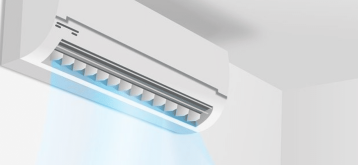6 Reasons Why Your Light Bulbs Are Blowing When Turned On
Advice
Light bulbs aren’t free, so it can be frustrating if they blow every time you turn the light on. But there are a few common reasons for this happening, some of which you can fix yourself.
Here are the five main reasons why your light bulbs are blowing, especially after turning them on.
Why your light bulbs keep blowing when turned on
1. Connection is loose
Usually, if a bulb keeps blowing immediately after turning on the light, it’s because it isn’t properly connected to the fixture. When this happens, electricity cannot flow properly from the fixture to the bulb’s cap, which causes it to arc (jump) across the space, with heat escaping in the process. The bulb then becomes hot, and can explode.
This loose connection may be caused by the bulb not being screwed in tightly enough, or a problem with the fixture itself. If it’s the fixture, it’s best to call an electrician.
2. Incorrect bulb wattage for fixture
Light fixtures have a certain amount of wattage they can handle for light bulbs. If you buy a bulb that has higher wattage than what comes through the fixture (called “overlamping”), it can cause the light socket and bulb to get extremely overheated because the system can’t send enough electricity through, which can actually melt the socket itself, and cause the bulb to blow. As you might have guessed, this can be a big fire hazard, so to avoid this issue, try to match the wattage of the fixture with the wattage of your bulbs.
You’ll find the fixture’s wattage on the socket itself. If you can’t find it, a good rule of thumb is to use a 60 watt bulb or lower. It won’t matter if you use a lower bulb because it isn’t trying to “request” more electricity than the fixture can provide.
3. Excess voltage
If your home’s electrical system has episodes of excess voltage, it can easily blow your light bulbs. This is usually caused by loose or damaged connections somewhere in the system, and so needs to be troubleshooted by an electrician.
Other reasons for blowing light bulbs
4. Cheap bulbs
As the old cliche goes: you (usually) get what you pay for. Lightbulbs are no exception. They all contain a filament, wire and stem, and base that work together to produce light, and if these things are made with cheap materials and put together badly, there’s a much higher chance of the bulb blowing out.
The type of bulb you use matters too. Modern LED (light-emitting diode) bulbs are considered to be the most reliable, followed by CFL (compact fluorescent lamp) bulbs, then halogen bulbs, and finally incandescent bulbs. To reduce blowouts,
5. Vibrating ceiling
Strange as it may seem, a vibrating ceiling can cause your bulbs to blow. This happens when the filament in the bulb loosens after being constantly shaken around. When the light is turned on and electricity is fed to it, the filament isn’t properly connected, and the heat of the electricity can cause it to blow.
Vibrating ceilings are usually caused by fans, especially those that have been set incorrectly and spin way too fast as a result. The fan’s fixture may also have come away from the ceiling a little, causing the whole unit to shake more than it should.
Suggested Articles

Can Good Air Conditioning Help You…
Struggling to get a good night’s sleep? Your air conditioner might just be the secret weapon you…
Read More
How to Store Cords: Safe and…
Messy cords aren’t just frustrating — they can also be unsafe. Tangled extension leads, power cords and chargers…
Read More
The Benefits of LED Lighting: Why…
The Benefits of LED Lighting: Why You Should Make the Switch When it comes to lighting your home or business,…
Read More